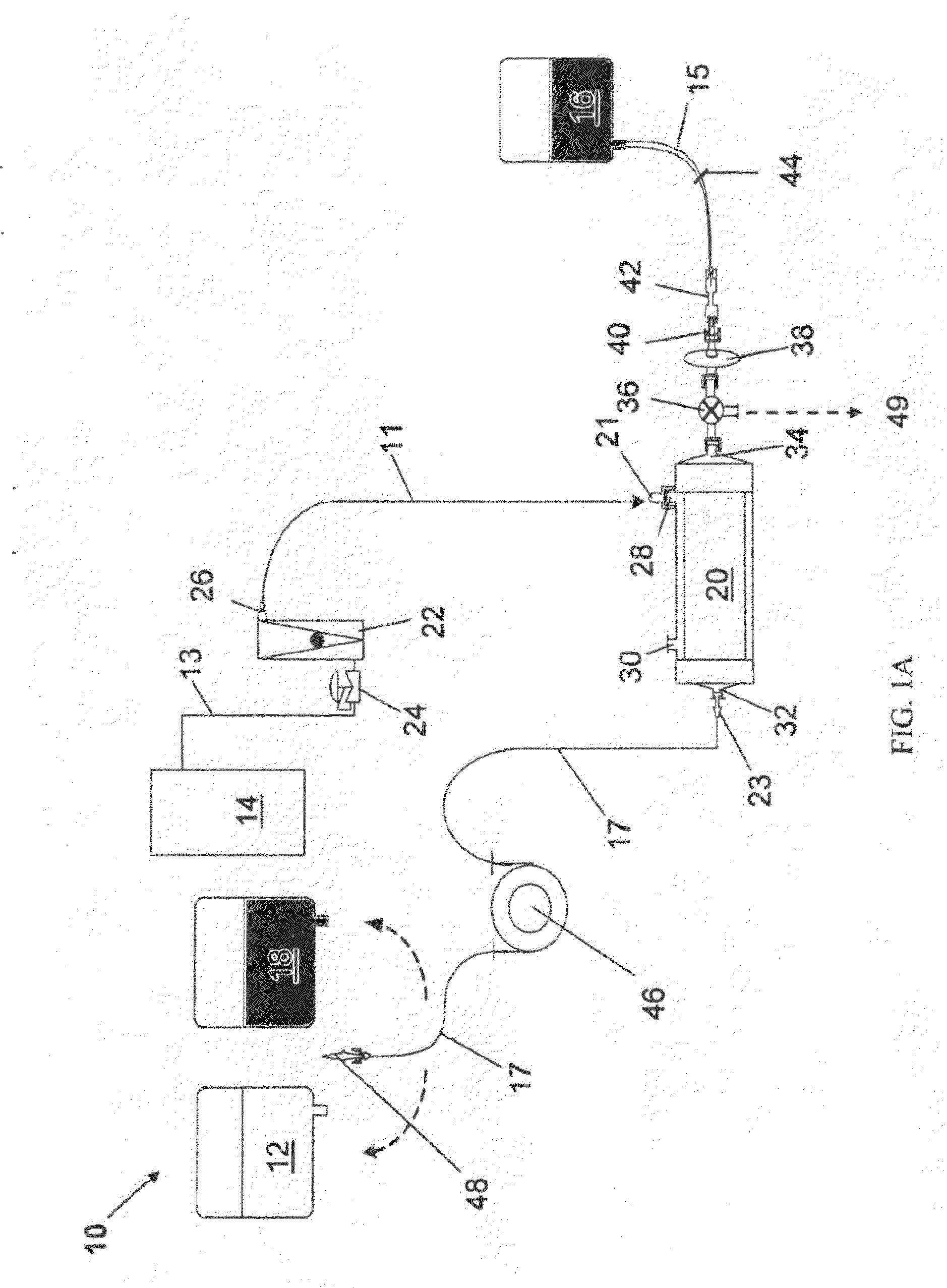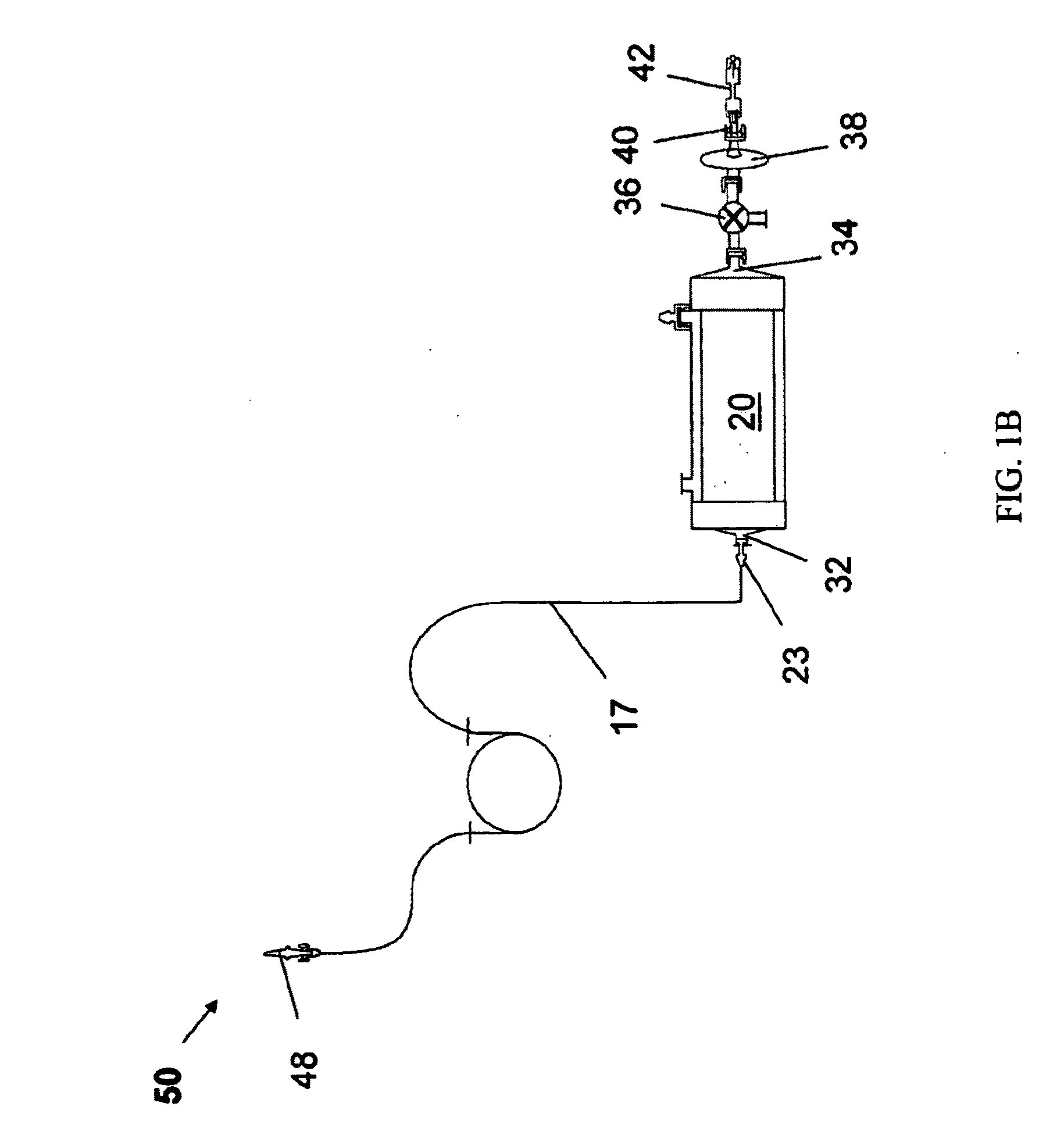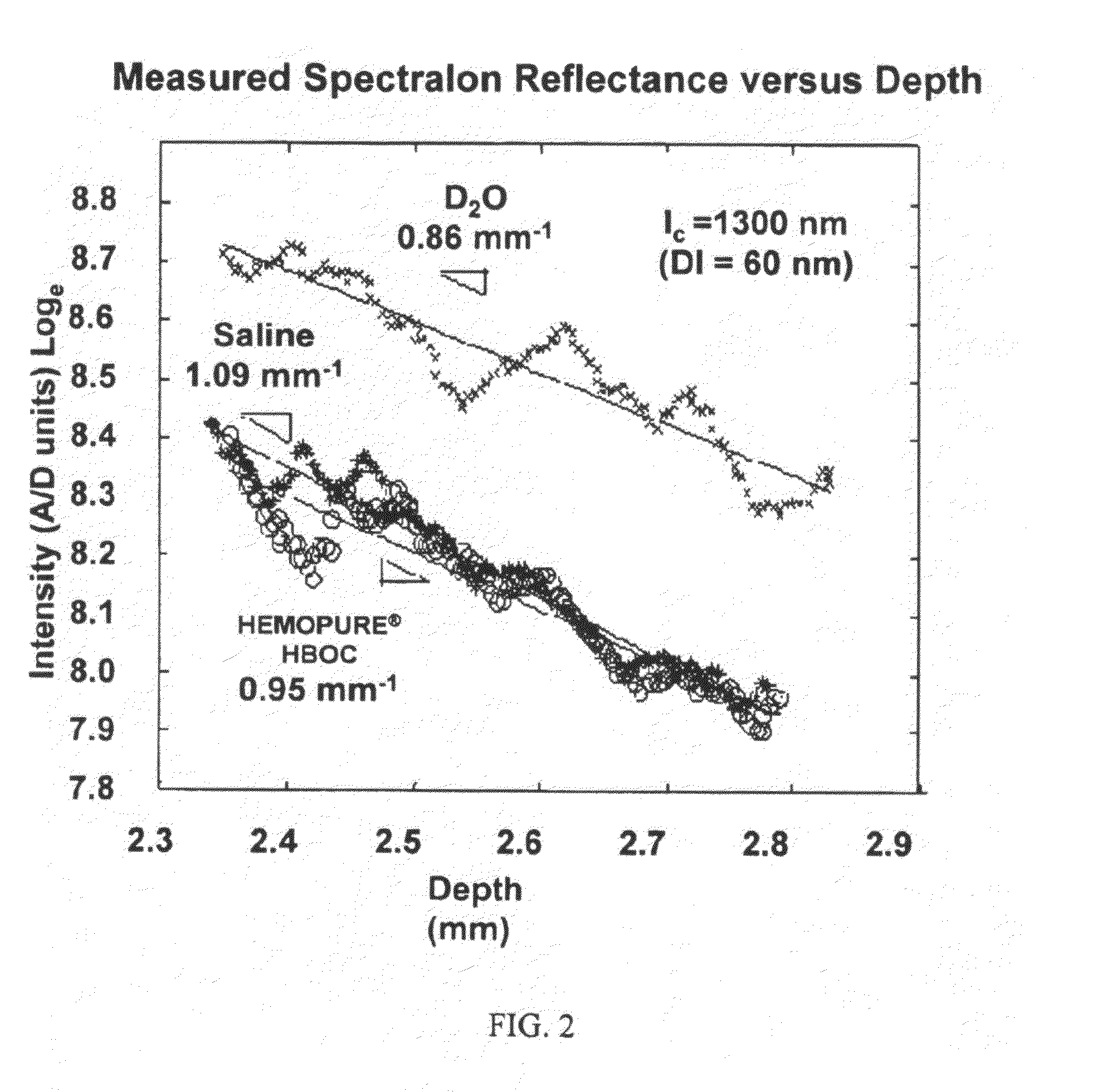Targeted oxygen delivery via intravenous or intra-arterial infusion of oxygenated polymerized hemoglobin solutions
a technology of oxygenated polymerized hemoglobin and targeted oxygen delivery, which is applied in the direction of peptide/protein ingredients, drug compositions, and membranes, etc., can solve the problems of irreversible damage, transient ischemic downstream tissues, and sustained irreversible damage, so as to restore tissue oxygenation, and reduce the risk of ischemic tissue damage
- Summary
- Abstract
- Description
- Claims
- Application Information
AI Technical Summary
Benefits of technology
Problems solved by technology
Method used
Image
Examples
example 1
Oxygenation of Polymerized Hemoglobin Solutions
[0125]HEMOPURE® HBOC as described in Table 1, was oxygenated by a method as described above, using oxygenation system 10. In this example, for each 1000 mL product collection bag 16, one 250 mL saline supply bag 18 and one Hb supply bag 12 containing HEMOPURE® HBOC were used.
[0126]Specific components used for oxygenation system 10 for this example are summarized in Table 2 below:
TABLE 2System EquipmentDescriptionSpecificationsMinntech Fiberflo Hollow0.03 μm pore size, 1 ft2 membrane areaFiber Capsule (SV-C-030-P)for cartridge 20Watson-Marlow 323E / D0−>100 mL / min flow range, PLCperistaltic pump for pump 46controllableBioprene autoclavable tubing4.8 OD × 1.6 mm IDfor tubing 17Tygon tubing for tubings 11 5 / 32 ID × 7 / 32 ODand 13Male and female Luer Lock ×Polypropylene 1 / 16 hose barb forconnectors 21 and 23Cole Parmer rotameter0-60 cc / min range(PMR1-011487) forrotameter 22Watts Fluidair Pressure0-300 psig inlet pressure, 0-60 psigRegulator (R...
example 2
Physiochemical and Biochemical Properties of HEMOPURE® HBOC
[0128]HEMOPURE® HBOC (see Table 1) is a cell-free, endotoxin free, glutaraldehyde-polymerized hemoglobin solution extracted from isolated bovine red blood cells (see Horn, E P. Proceedings of the ASA Congress. 1999; Horn E P, et al., Surgery. 1997; 121:411-418; and Standl T, et al. Can J. Anaesth. 1996; 43:714-723, the entire teachings all of which are incorporated herein by reference), that was initially developed as an alternative to red blood cell transfusions for anemic surgical patients.
[0129]By facilitating diffusive oxygen delivery (oxygen diffusion) and convective oxygen delivery (oxygen transport), HEMOPURE® HBOC may act as a direct oxygen donor and “oxygen bridge” between red blood cells and tissues. HEMOPURE® HBOC is characterized by an oxygen equilibrium curve that is right-shifted compared to that of native human hemoglobin, resulting in a P50 (the partial pressure of oxygen at which the Hb is 50% saturated) of ...
example 3
In Vitro Results
[0131]In all studies described, HEMOPURE® HBOC was oxygenated using a device specially designed and validated for this purpose as described in Example 1.
[0132]We have characterized in vitro that oxygenated HEMOPURE® HBOC transmits near-infrared light (1310 nm) efficiently with an attenuation that is similar to that of saline (−1) (FIG. 2). The refractive index of oxygenated HEMOPURE® HBOC is 1.357.
[0133]We have also demonstrated in vitro that oxygenated HEMOPURE® HBOC can be infused through the lumen of an angioplasty catheter (Maverick model, Boston Scientific, Natick, Mass.) and an OCT imaging catheter (Helios Short-nose imaging catheter, Light Labs Imaging, Inc., Westford, Mass.) using a typical clinical syringe pump (MedRad V Pro-Vis) at infusion rates up to 60 ml / min, consistent with rates appropriate for intracoronary infusion in pigs and humans. We have also shown that it is possible to collect high-quality images of artery architecture when oxygenated HEMOPUR...
PUM
| Property | Measurement | Unit |
|---|---|---|
| viscosity | aaaaa | aaaaa |
| viscosity | aaaaa | aaaaa |
| molecular weight | aaaaa | aaaaa |
Abstract
Description
Claims
Application Information
 Login to View More
Login to View More - R&D
- Intellectual Property
- Life Sciences
- Materials
- Tech Scout
- Unparalleled Data Quality
- Higher Quality Content
- 60% Fewer Hallucinations
Browse by: Latest US Patents, China's latest patents, Technical Efficacy Thesaurus, Application Domain, Technology Topic, Popular Technical Reports.
© 2025 PatSnap. All rights reserved.Legal|Privacy policy|Modern Slavery Act Transparency Statement|Sitemap|About US| Contact US: help@patsnap.com



